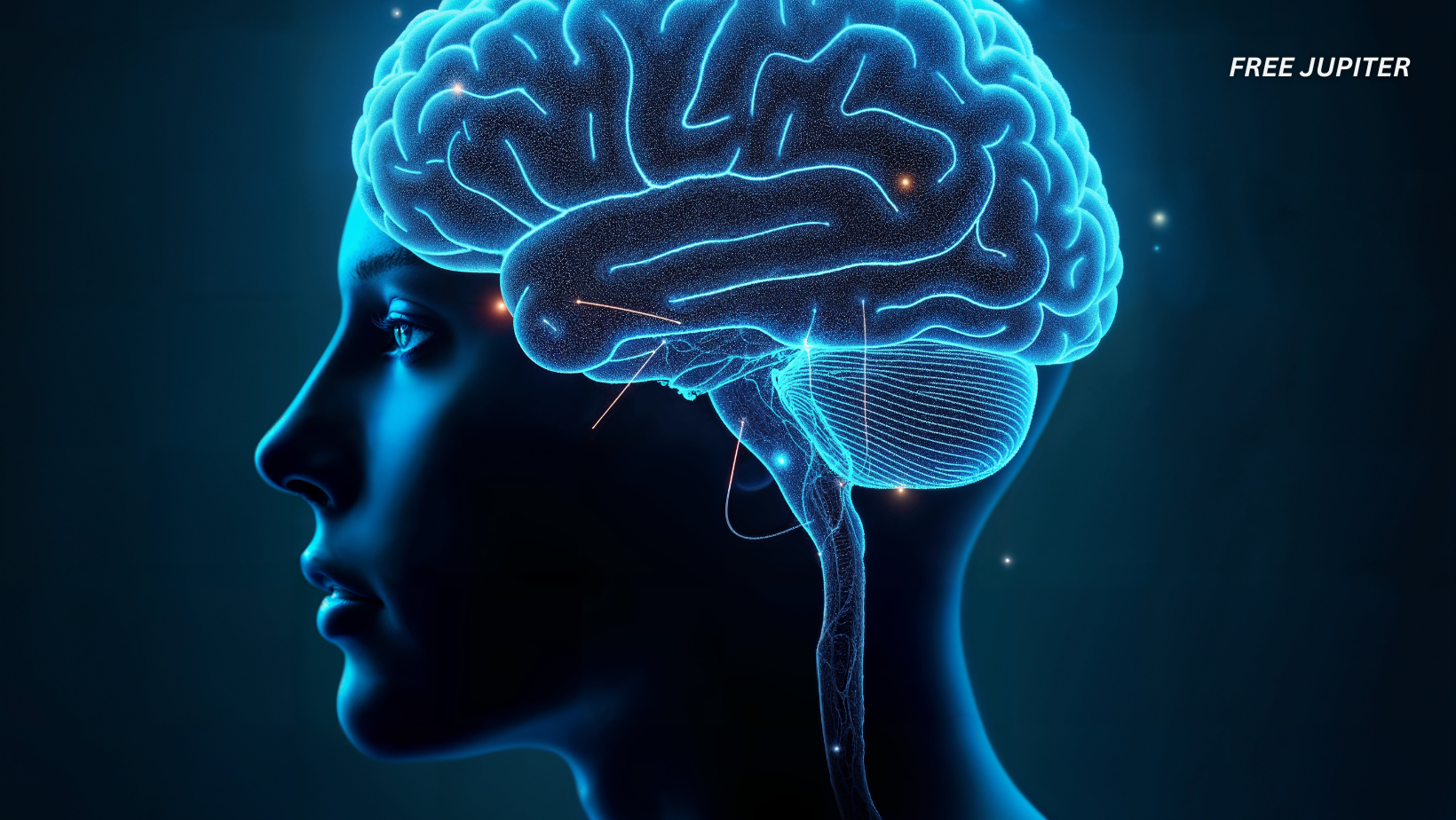Friendly Note: FreeJupiter.com shares general info for curious minds 🌟 Please fact-check all claims—and always check health matters with a professional 💙
We’ve always known that oxygen is essential to keep us alive. But scientists are now discovering that this invisible gas may also play a starring role in how baby brains develop—especially in those earliest days after birth. A new study reveals that oxygen doesn’t just fuel the brain—it actually helps it grow new nerve cells and organize them, laying down the foundation for everything from movement to memory.
The Big Question: What Helps Brain Cells Settle Into Place?
Before a baby is born—and in the weeks right after—its brain is a work in progress. Nerve cells, called neurons, are being born in huge numbers. But it’s not enough for these cells to exist—they need to find their proper place and start doing their job. This process, where neurons grow, move, and mature, is key to brain function.
Scientists have long studied how our genes shape this process. But one big puzzle remained: What role does the environment play—especially things like oxygen?
A Shift in Focus: Looking at Air Instead of Just DNA
Until recently, most brain research focused on the blueprint written in our genes. Environmental factors like oxygen were often brushed aside. But researchers are now turning their attention to this overlooked piece of the puzzle.
A team of developmental brain scientists dove into this question—and what they found could change how we understand early brain development, especially for babies born too soon.
A Brain Without Enough Air
Babies born prematurely often face a problem: their brains don’t get enough oxygen. This condition, known as “hypoxia,” has been linked to delays in brain development and learning difficulties. While doctors have known about these issues for years, the exact reasons behind them remained fuzzy.
Now, scientists have pinpointed a key biological pathway that seems to explain what’s going on. And it all starts with oxygen—or the lack of it.
Meet Hif1α: The Brain’s Oxygen Switch
In their research, scientists zeroed in on a molecule called Hif1α (pronounced “hiff-one-alpha”). Think of it like a switch that controls how neurons grow and move based on oxygen levels.
When oxygen is low—as it is naturally in a fetus or a premature newborn—Hif1α is active. And when this switch is on, it actually slows down the brain’s development. Neurons hold back. They don’t mature or travel to where they’re supposed to go.
But as oxygen levels rise—after birth, for instance—this switch starts to turn off. And when Hif1α quiets down, neurons get moving. They grow, mature, and find their place in the brain’s complex circuitry.
Read more: New Research Links Popular Over-the-Counter Medication to Brain Health Issues
Mice, Microscopes, and Micro-Brains
To uncover this, the research team used mice as models, since their brains develop in similar ways to ours. They noticed that even after baby mice were born, a part of their brain called the cerebellum stayed low in oxygen for a few days. This gave them a rare window to watch how neurons respond when oxygen levels rise.
To track what was happening, the team used advanced microscopes that can take stunning 3D images of brain tissue and even zoom in to the size of a single cell. These tools let them see the exact changes happening inside the brain—like how neurons changed shape and started moving once oxygen levels climbed.
Why This Matters for Preemies
For babies born early, oxygen shortages can disrupt this delicate timing. If their brains don’t get enough oxygen at the right moment, the neurons might not mature or move properly. That could lead to long-term challenges in how their brain circuits are wired.
This discovery opens the door for new ways to help. If scientists can find safe methods to gently adjust the Hif1α pathway, it might be possible to support healthy brain development in preterm babies—helping their neurons catch up and form better connections.
Science Takes a Village
This breakthrough didn’t come from one lab coat and a microscope. It was the result of eight years of work by a dedicated team of researchers—biologists, imaging specialists, and computer scientists. Each played a vital role in piecing together this brain-and-oxygen mystery.
Together, they not only uncovered how neurons respond to oxygen, but also how those changes ripple through the entire developing brain. It’s a finding that could one day help doctors better care for some of the world’s tiniest patients.
Read more: Google Claims That AI Will Surpass Human Intelligence By 2030, Posing Extinction Risk
Brain Food: More Than Just Oxygen
While oxygen acts like the spark that jumpstarts neuron development, it’s not the only ingredient babies need for healthy brain growth. The brain is one of the most energy-hungry organs in the body, and it depends on a steady supply of key nutrients to build itself up—especially during those early, rapid-fire months of development.
Choline: The Memory Builder
Choline is a nutrient that plays a huge role in building cell membranes and producing a neurotransmitter called acetylcholine, which supports memory and learning. It’s especially important during pregnancy and infancy, when brain cells are multiplying at lightning speed. Found in breastmilk, formula, eggs, and certain meats, choline helps form the brain’s structural wiring.
Iron: The Oxygen Carrier
Iron isn’t just important for blood—it’s vital for the brain too. It helps red blood cells carry oxygen, but it also supports the development of myelin, a fatty coating that insulates nerve fibers and boosts communication between brain cells. A lack of iron in infancy has been linked to cognitive delays and attention issues later in life. That’s why iron-fortified baby foods and formulas are common.
Read more: The Brain Actively Removes Unwanted Memories. Here’s How.
DHA: The Brain’s Building Block
Docosahexaenoic acid, or DHA, is an omega-3 fatty acid that acts like scaffolding for the developing brain. It helps form the outer layer of neurons and supports visual and cognitive function. DHA is abundant in breastmilk (especially if the mother’s diet includes fatty fish), and it’s often added to infant formulas for this reason. Without enough DHA, neurons might not connect as efficiently, leading to slower processing and reduced learning ability.
A Symphony of Nutrients
Other nutrients—like zinc, folate, iodine, and vitamin B12—also play supporting roles in brain development. Think of it like an orchestra: each nutrient has its own part, and together, they create the symphony of a healthy, growing brain.
In short, oxygen may be the spark, but nutrients are the bricks and mortar. For a baby’s brain to reach its full potential, both need to work together in perfect harmony.
Disclaimer: The information in this article is for general informational purposes only and is not medical advice. We are not doctors, and this website is run as a family hobby project. Always consult a qualified healthcare professional before making decisions about your health. Please fact-check any claims and use this content as a starting point, not a substitute for professional guidance.










